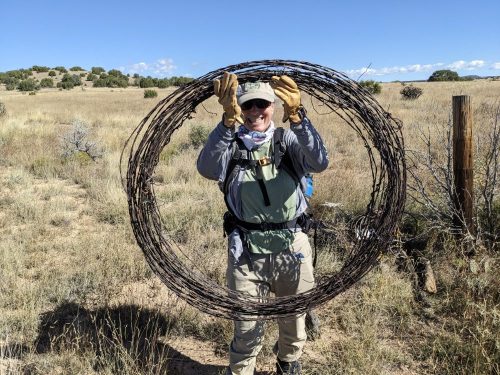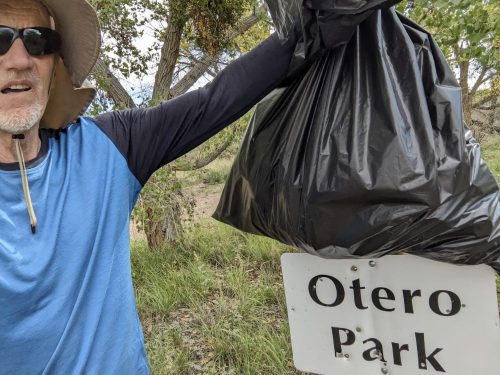NMVFO volunteers returned to the Galisteo Basin near Lamy, and removed barb wire and t-posts at the Dovetail Preserve.



Sagebrush personal hiking blog
NMVFO volunteers returned to the Galisteo Basin near Lamy, and removed barb wire and t-posts at the Dovetail Preserve.



Six NMVFO volunteers started from New Canyon Campground in the Manzanos and hiked up to the Crest Trail, and then hiked to the intersection with Spruce Canyon and back, clearing 16 blowdowns and lopping some of the denser spots on the crest.





Save Our Bosque Task Force held their monthly second- Saturday- of – the- month cleanup, at Otero Park. The turnout tends to be highly variable, and this month the crowd was teeny-tiny, though the weather was perfect. Otero Park is along the Socorro Resupply Route of the Grand Enchantment Trail, and I have fond memories.

Broken glass bottles along a rock embankment next to the parking area continue to be a problem.
The Rio Grande, visible from the park, had strong flow.

Big news may be announced soon about this section of bosque trail. Stay tuned.